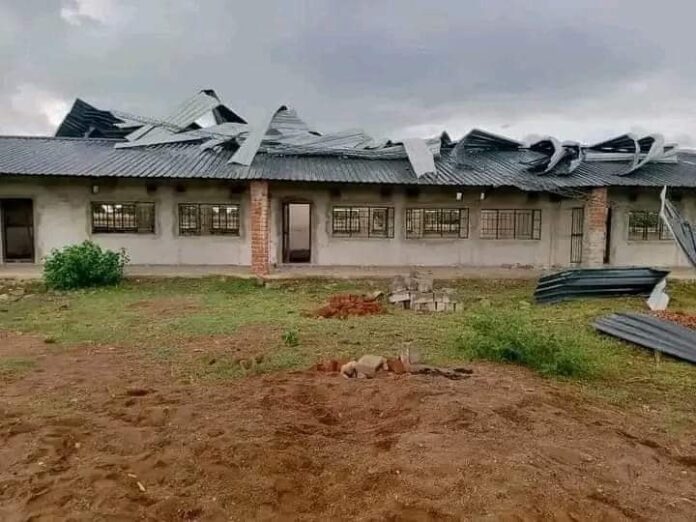ABOUT CDF AS A VEHICLE FOR INFRASTRUCTURE DEVELOPMENT: A LOOK AT QUALITY ISSUES
By Sean Tembo – PeP President
1. When a Government spends taxpayers money to put up public infrastructure, that infrastructure must stand the test of time so that only minimal amounts should be spent subsequently to maintain such infrastructure. If money is spent on public infrastructure today and tomorrow such infrastructure needs to be replaced because it was of poor quality, then we are not going to make much progress as a nation. But perhaps a question arises as to what really constitutes high quality public infrastructure? Well, from my standpoint, it is infrastructure that is able to outlive a generation. Am sure we can all see how KK’s schools, hospitals, Police Stations, local courts etcetera, are still useful today with their signature asbestos roofs. That is because they were quality public infrastructure, and the nation is still deriving value from them today, more than 50 years later.
2. But can we say the same about public infrastructure that is currently being developed using the Constituency Development Fund (CDF)? The answer is a definite no. From the time that the UPND administration decided to use CDF as the main driver for public infrastructure development, we have been greeted with scenes of roofs being blown out of newly constructed schools and police stations, as well as newly constructed bridges being washed away, every rain season. So instead of the nation deriving value from this newly constructed infrastructure, for a lifetime, the way we have been able to derive value from KK’s infrastructure for decades, the infrastructure being developed under the UPND administration appear to be very temporal. They are disposable and only good for a very short period of time. But why is that the case?
3. Well, construction is a very specialized field which requires the active participation of different specialized professionals, if the final product is one that will stand the test of time. You need an Architect, Quantity Surveyor, Civil Engineer, Electrical Engineer etcetera. All these professionals need to constantly monitor and supervise the main contractor so as to ensure that building standards are adhered to at every stage of the way. However, these professionals are not involved in most CDF projects because of the way these projects are implemented and the amounts of money involved. For example, a particular constituency will award a tender to construct say two by three classroom blocks amounting to K800,000 to a particular contractor. This will most likely be the only project that this particular contractor has. The small nature of the project means that it is not financially viable for the CDF Committee to also contract an Architect, Quantity Surveyor, Civil Engineer, Electrical Engineer etcetera to design and supervise this project.
4. However, without the input and supervision of the relevant construction professionals, the final product ends up being of very compromised quality. For example, how can a Councillor or Village Headman tell the difference between 0.6mm roofing sheets and 0.3mm roofing sheets? Or tell the difference between 25MPa concrete and 10MPa concrete? Or the difference between 6mm glass and 3mm glass? Or the difference between Y16 deformed bars and Y10 deformed bars? Or the difference between a 6mm poly pipe and a 3mm poly pipe? They most definitely would not tell the difference until the roof of the school is blown away or the structure collapses.
5. That is why it has always been our argument that CDF should only be used for petty projects and not serious public infrastructure development. For public infrastructure such as schools, clinics, police stations etcetera, it is better for such projects to be implemented and supervised by the Ministry of Infrastructure where there are qualified and experienced civil servants who are better placed to manage such projects. So if Government decides that in the 2024 fiscal year, they want to increase classroom space by constructing 2 by 3 classroom blocks at every Primary School across the country, the Ministry of Infrastructure should develop a Bill of Quantities (BoQ) which specifies quality parameters such as the strength of concrete to be used, the thickness of roofing sheets etcetera. The project can then be divided into different Lots with each Lot made up of say 100 schools. Each Lot can then be awarded to a Main Contractor, Architect, Quantity Surveyor, Civil Engineer, Electrical Engineer etcetera for implementation. Such an approach will ensure that when taxpayers money is spent to develop public infrastructure, such public infrastructure stands the test of time.
Anyway, the Future is SET
///END
SET 28.01.2024

Sean Enock Tembo needs to be congratulated here for showing maturity and seriousness. This is the way to comment on public issues. This way rational people will stop and listen.
What do the Professionals (Architects, Civil, Structural Electrical Engineers) get paid for at the supervising Ministry level for these CDF Projects? They should be ones supervising the Contractor. As rightly pointed out, due to the small size of these Project Budgets, a Contractor cannot viably make a Return ( Profit) if he has to employ these Professionals. In any case these Projects are not the Contractors’ Projects but Government Projects, what would be the motivation of the Contractors to build quality Infrastructures?
But these skills are available in the Ministry of Local Government and Rural Development.
You have the head on your shoulder sir.Im equally worried.
Surely this is the worry not only of upnd projects but post unip project when nichekeleko mentality crept into the people, quality has always been a thorny issue.